The Ultimate Guide to Selling Your Boat Privately
Whether you've got four-foot fever and it's time for something bigger, or you want to get a different type of boat now that the kids are on their own and out of college, you have a boat to sell.
How can you sell the boat yourself quickly and for a fair price?
Working without a broker means you do it all yourself. But you can do it - this guide is to help you from start to finish if you go it alone with the confidence you'll get a good result.
How to Sell Your Boat Privately in 9 Steps
- Clean the boat and fix known problems
- Photograph it
- Determine your price
- Write your listing
- Place your ads
- Field inquiries and show the boat until you get an offer
- Negotiate the price
- Survey and sea trial
- Settlement of papers and payments
Below I'll discuss each of these steps in detail and walk you through the entire process.
As a boat owner of twenty years, William has owned, bought, and sold several boats over his lifetime. In this extensive guide, he'll discuss every important step and consideration of selling your boat privately.
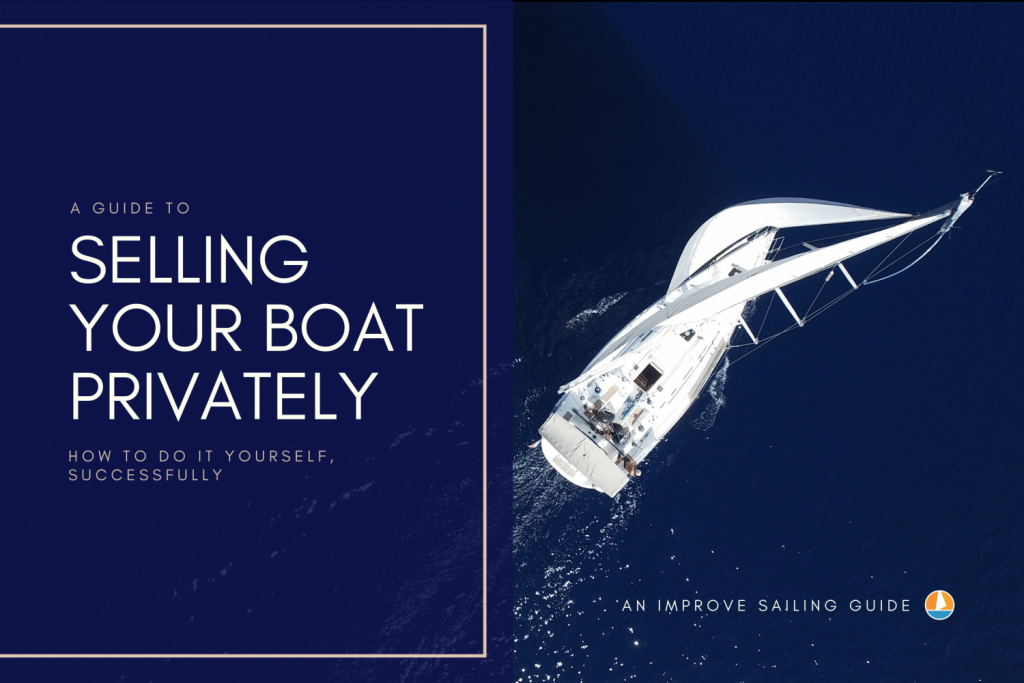
On this page:

Is a Private Sale Right for You?
The standard broker commission on yacht sales is 10% of the selling price. It's tempting to sell the boat yourself before you call a broker just to see what's out there, and there's nothing wrong with that approach.
Smaller boats can be sold in local markets and are ideal for private sales. Larger boats, blue water cruisers, or custom boats with limited production may be a better choice to list with a broker since the market is no longer local. Just attracting buyers from out of town isn't enough reason, consider whether you need the reach of print advertising or brokerage websites like YachtWorld.com.
But if your transaction is simple - for example, it involves no banks or financing - and you can reach the right market, you can do it yourself.
If you want to check whether you can sell your boat for free, you should really check out my other article on selling your boat without paying a cent. There, I'll share some tips and techniques I've gained over many years of selling boats.

Get Your Boat Ready
Selling a boat is like selling your house; you need to maximize the "curb appeal." Everything must be cleaned, fixed, prepped, and primped to wow the buyer at first sight. A dirty boat with obvious damage is a tipoff that the boat may have problems or poor maintenance. This will be an instant turnoff for all but the most determined bargain hunters.
Imagine the buyer walking down the dock - from the head of the dock when they spot the boat they will notice her looks. As they walk down the dock, more of the details will become visible. By the time they reach the slip they will have formed opinions and impressions of the boat. You don’t want any of these to be bad.
You've got to make sure there's nothing to keep them from taking a closer look inside.
The Big Strip and Clean
Even the best kept, ship-shape Bristol condition vessel needs a good going over before being offered for sale. And while most of us keep our boats neat and clean, we all have personal stuff on them, and we don't scour every corner every week.
Empty the boat
This is more difficult if you're using the boat while you sell it, but an empty boat shows and photographs so much better than a boat full of gear and clutter. Keep all the equipment that goes with the boat on board and stowed, but get all the extra water toys, clothes, gear, and personal items off.
Clean and wax the hull and topsides
A good compound and wax job makes an older boat bright and brings a mirror finish and sparkle to a newer one. Nothing makes a boat stand more out than the shimmer of water reflecting on polished and clean gel coat.

Polish the stainless
Stainless looks good, but you'd be surprised how much better it looks right after a polishing. It doesn't take long and it makes a big impression.
Fix all the trim you can
Bent stanchions and loose rub rails are something that will pull the buyer out of that "wow" you got from the compound and wax job. Fix dings and chips in gel coat if possible.
Open everything up ...
... and clean inside. Lift every cushion, open every locker, floorboard and lazarette cover. Pull back carpets and shine a flashlight in every corner. You'll do a certain amount of this when you empty the boat, but you want to take this time to vacuum, wipe, clean and deodorize every corner of the boat.
Fix the broken things
If something is broken, do your best to fix it. Everything which doesn’t work may require explanation, and too many problems may cost you a sale or a big adjustment in price. If you know the port running light is out and the bilge pump doesn't work, that won’t show well.
There may be some exceptions - large or extensive repairs which may affect the value of the boat or which a new owner may want to fix. A broken chart plotter may cost thousands to replace, and the replacement may not be what a new owner wants. So remove it, or tell the buyer it doesn't work.
Tidy and clean
Whatever is on the boat should be put away and not left in the open. You want an impression of space and order for photos and showings. You can stage the boat with flowers, place settings, or wine glasses if you want to, but it’s more important to be neat.
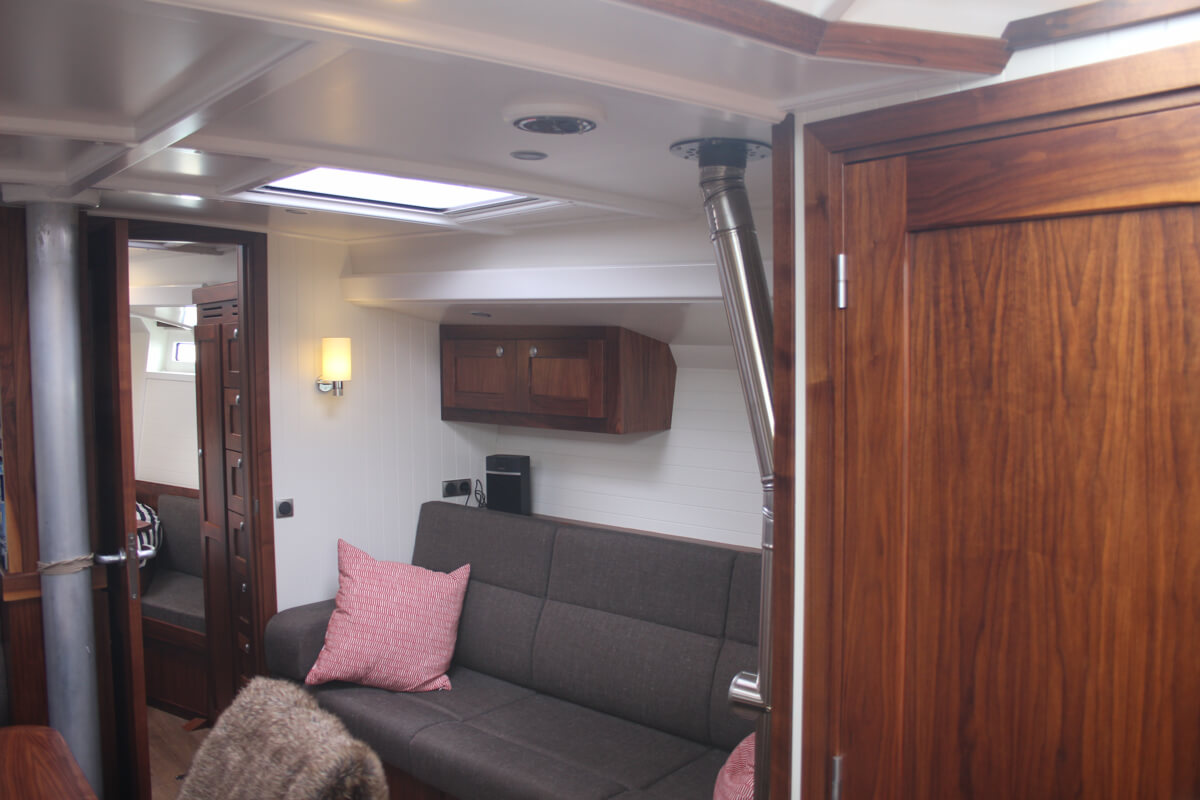
Find and eliminate smells
Bilges, heads, galleys, mattresses and linens, mold and mildew - all things which can have a less-than-pleasant odor if not attended to. Little turns a buyer off like a weird-smelling boat. If the head smells, replace the hoses and get rid of the stench. Empty and clean the bilge. Clean and deodorize the fridge, get rid of any moldy or mildewed materials and clean any mildewed areas with a strong cleaner. Air the boat out - it should smell fresh when the buyer shows up.

Find Your Price
What is your boat worth? That's not always a straightforward question, and you can put off buyers with an unrealistic price. Too high and they won't think you're serious about selling; too low and they will wonder what's wrong with it.
The answer is research, and a broker has the advantage over a private seller. A broker will have access to the database of boats sold through other brokerages and the final selling price. Unless you have a friend in the business, you won't have this. A broker might help you with a market analysis trying to court your business, but it's best if you're clear upfront that you are intending a private listing for a while first.
So where do you look?
Current boats for sale
Looking on Yachtworld, Boat Trader, and any of a dozen other sites will give you an idea of the asking price for similar boats. It's a good guideline, but you need to remember these are not selling prices, but the starting price for negotiations. Most boats do not sell for their initial list price.
So search these web sites and build a list of identical boats for sale, and make notes about differences in age, condition, and included equipment. Build a spreadsheet or make a list.
Some boat selling sites include:
Look for sister ships where possible, or similar vessels in size and age if you can't find an exact match.
We've published original research on the average cost of sailboats. It's written for new wannabe sailboat owners, but it can be another good point to start comparing. You can read our original research on sailboat prices here.
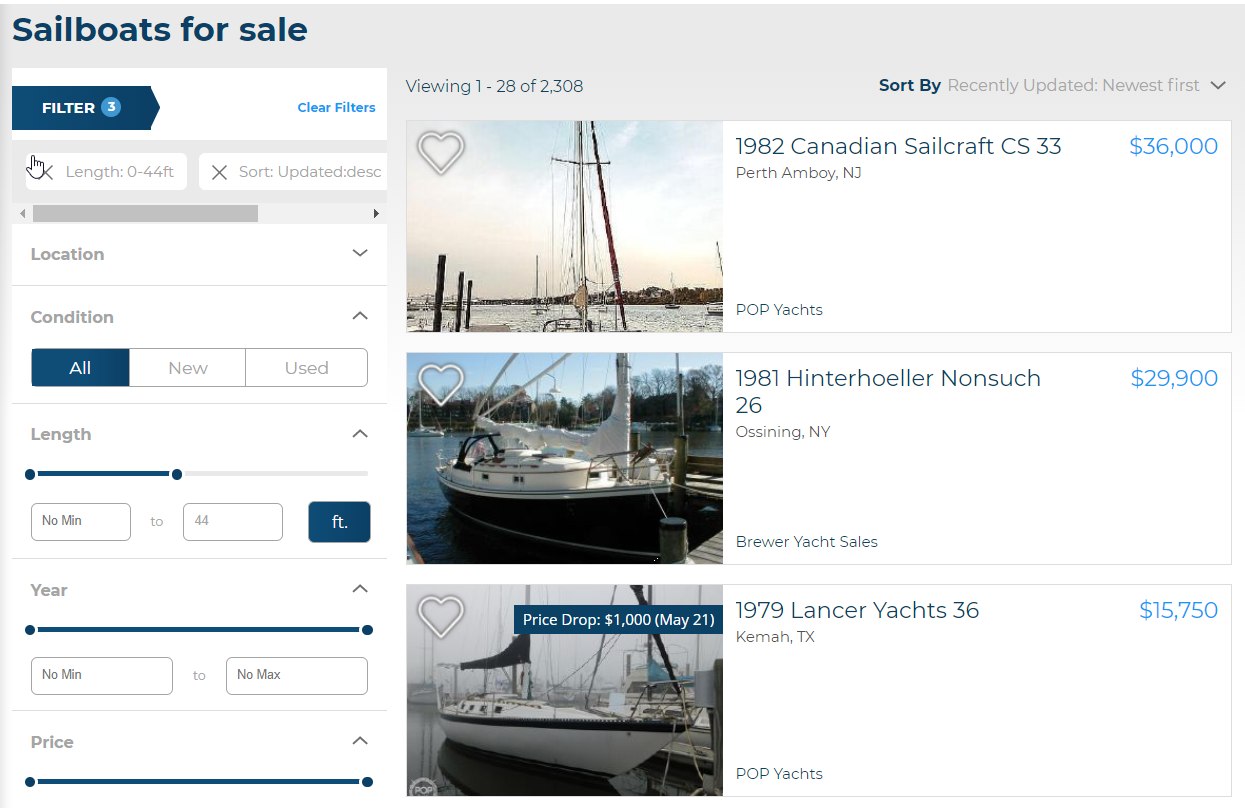
Value Guides
There are guides available for used boat valuations. Their value to you depends on your boat. The National Automobile Dealers Association (NADA) collect details on new and used vehicle sales and make them available to the public.
This data does not collect all sales on all vessels, so be careful. Data for newer, smaller, common vessels is much better than older, larger boats and may be quite far off reality.
The ABOS Marine Blue Book has sales and valuation information for many boats, but it will cost $29.95 for a report on your boat model and year.
Getting to the Price
I can't tell you how to get to the perfect price, I can only lead you to the ballpark. You need to sit down and evaluate your finances against the results of your research to come up with a price. Keep a few things in mind though.
- Consider the minimum you will take for your boat. What would be a "bad deal" for you that you’d still take to move on? You don't have to share this with anyone, but you should consider it.
- It’s a normal for us to overvalue the things we love, especially big-ticket items. Don't fall in the over-pricing trap, you did this research to get a reality check. If five sister ships average $37,000 in asking price, there needs to be an exceptional reason yours is worth $50,000. The reality is...it probably isn't worth it, and it won't sell at that price. It will sell for something near the average price of identical boats.
- How quickly do you want or need to sell? The more aggressive the price, the quicker the sale. Do you "sort of want to sell the boat in the next year or so" or do you already have a deposit on a new boat for delivery next spring? Timing matters - consider asking less if you are motivated.

Listing Your Boat
The listing brings in the calls and e-mails from a buyer, so you need to take care to craft a professional, accurate listing to draw attention to your boat. As the old saw goes, "you never get a second chance to make a first impression," so when you draw the eyes to your listing you get a call.
Listing your boat successfully consists of three major aspects:
- picture
- description
- and ad copy
Take Pictures
You need not hire a professional to take pictures if you're careful and have a little patience. You want to take pictures of the boat inside and out, and of her on the water and sailing if you can. If you're not comfortable taking the pictures or don't have good equipment, see if you can find a hobbyist friend to help you.
Some pictures work better than others, here are a few tips to help you get the best shots of your boat. The outside photos are easiest; if you can get a friend to shoot your boat from another boat or a dock. The interior shots are the trickiest, and can make or break your listing. Don't be shy about taking a lot of pictures, you'll only want the best ones but the more you try the better a chance of good shots.
Here are four important things to keep in mind when taking pictures:
- Pay attention to lighting
- Mind the clutter
- Think about "framing"
- Stage your photos
Pay attention to lighting
Poorly lit photos turn a beautiful boat dark and grim. A bright day with the windows open isn't the best way to shoot the interior, as the windows wash out the rest of the picture. Consider shooting late in the day or evening with the lights on and the curtains closed. If you use a camera with a tripod, you can adjust shutter speeds to give you more light and a bright photo without a flash. You want a "warm" picture, with more yellows and red tones rather than cool blues.
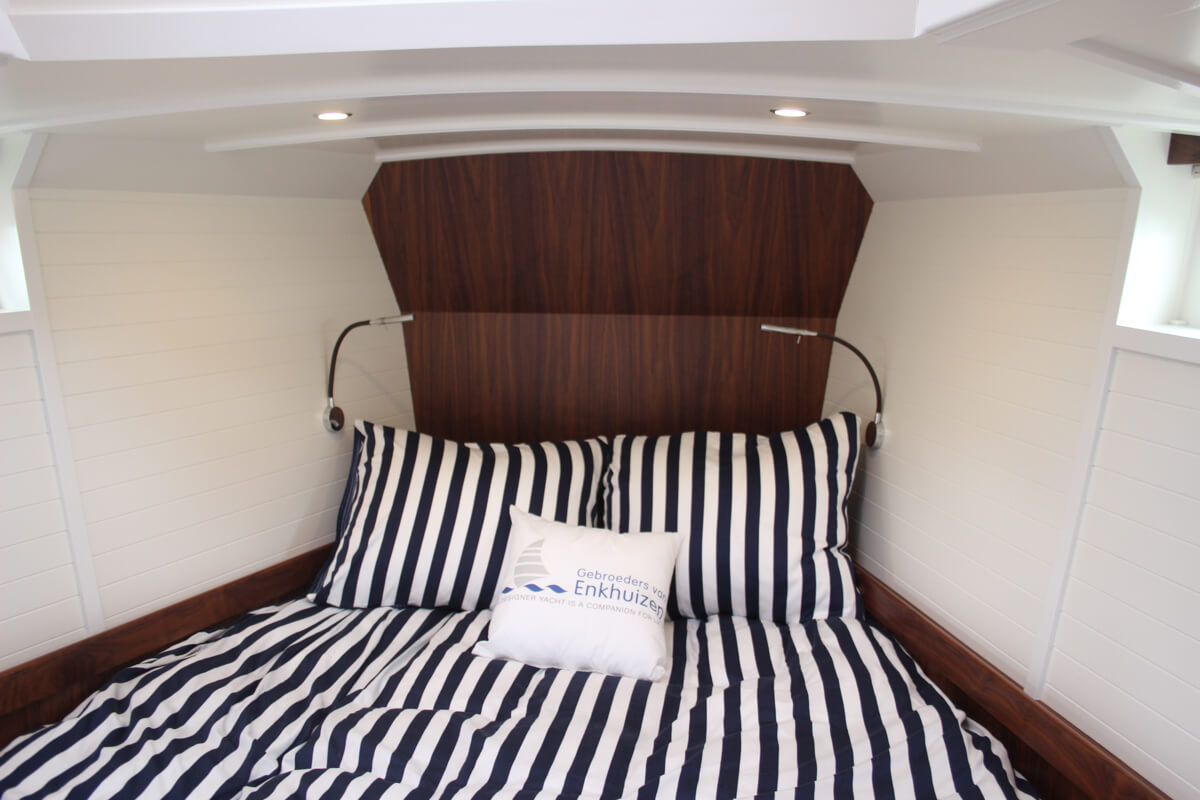
Mind the clutter
Don't shoot your pictures before you've emptied the boat. If you can't wait, then move all the clutter around so it's not in the pictures. Move everything from the saloon into the cabins for the saloon photos, then empty the cabins into the saloon to shoot them empty. Above all, you want a clean, uncluttered appearance to the boat. It should look ready for the new owner to show up with weekend bags and a cooler full of food and take off.
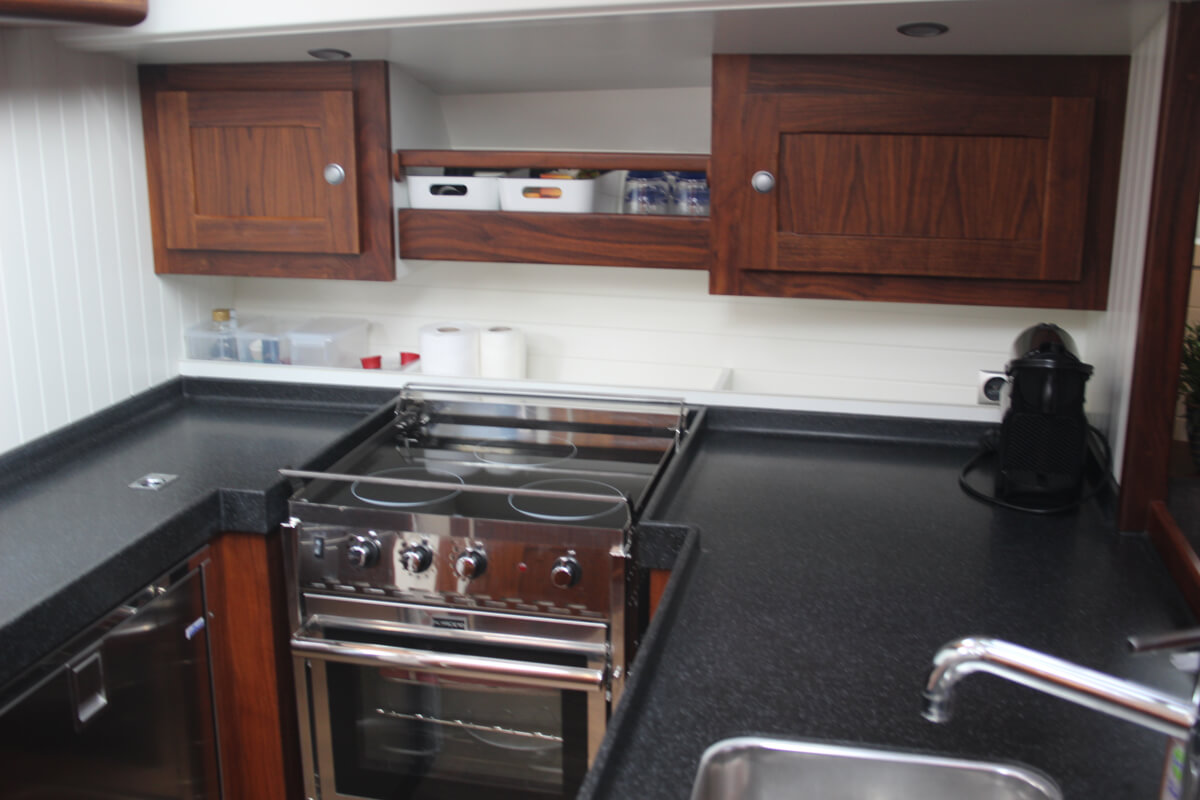
Think about "framing"
Framing a photo is taking it so only what you want to show in the picture is actually in the picture. Careful framing of photos can lead to cleaner, nicer photos that show exactly what you're looking for instead of random jumbles of angles, doors and lockers. You should crop badly framed pictures before you use them. Don’t get photobombed by your own clutter!
Stage your photos
Don't just walk through firing the camera in random directions. Think about the part of the boat you are photographing - how it will be used, what the prospective owner might want to see. A navigation station with some displays on tells more of a story than a bunch of dead screens. A bottle of wine and some glasses in the cockpit can set a scene.
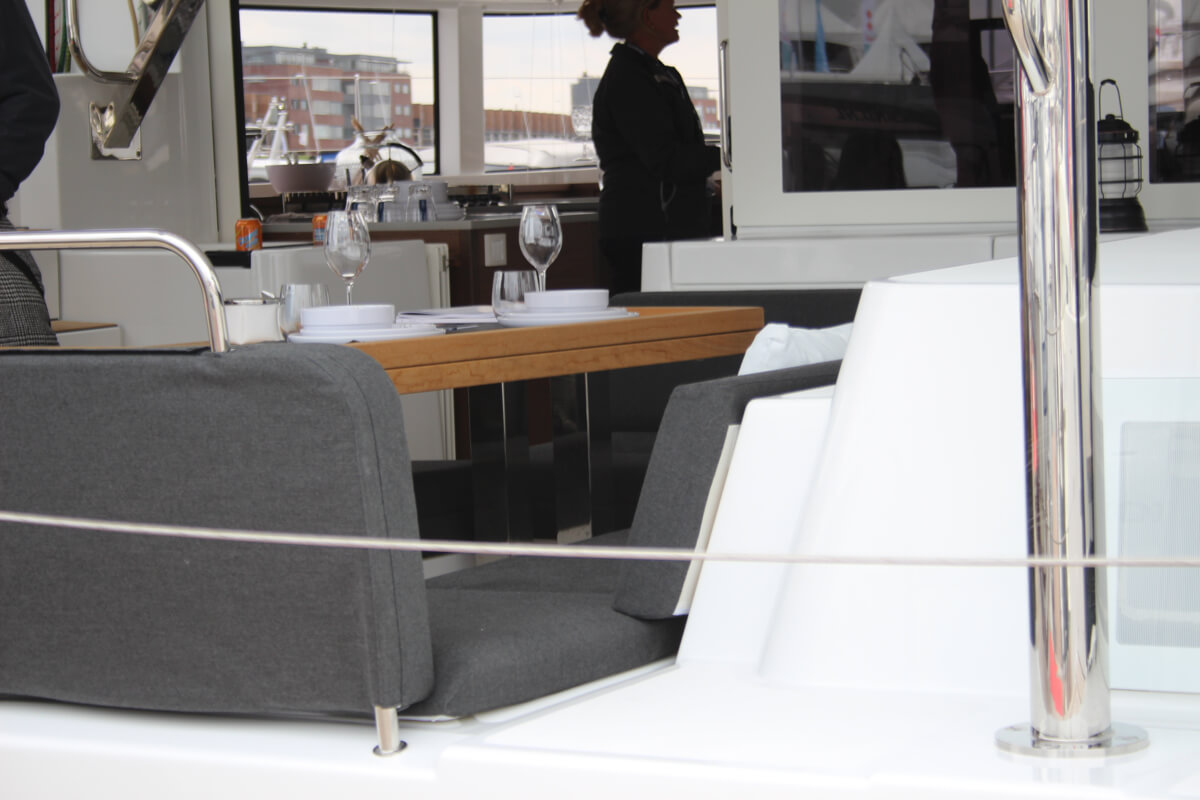
Takes lots of pictures, digital photography is cheap (free!). Use only the best shots, and avoid pictures of dirty, broken, or rusty things.
Get the Details Right
A detailed list of equipment on the boat helps buyers. Prospects will ask questions - most times questions that are answered in the listing - and you want that information handy. So don't list "Volvo diesel engine" when you can list "2006 Volvo Penta MD3020 with 1,412 hours." Brands, models, capacities, usage metrics (like engine hours and installation years) all help paint a better picture of the boat for the prospective buyer.
Make sure you have detailed information for:
- All electronics including chart plotters, instruments, radios and navigation equipment.
- All engines and generators including model, year, and hours.
- Major accessories like life rafts and tenders.
- Boat systems like batteries, chargers, refrigeration, environmental systems.
- All tankage including fuel, fresh water, and holding tanks.
Write Your Ad Copy
Excellent ad copy is correct, accurate, and interesting. Avoid meaningless phrases and superlatives about the boat. "The perfect weekend cruiser" doesn't tell anyone anything, it's too vague. "Sleeping eight with three double staterooms and a fold-down double bed in the saloon, she makes an excellent weekender for families with children or multiple couples" is much more descriptive. Aim for good grammar and have a couple of friends read over it.
Get specific
Avoid pretension in the listing and don't over-promise or exaggerate. Every used boat has weaknesses, and you shouldn't pretend they don't exist. You don't have to disclose flaws in a listing, but if you list a boat as "Bristol Condition" and it isn't, you’ll irritate buyers and waste your time.
Your ad copy should be a mental walk-through and a tour of the boat. Give a clear picture but don't overwhelm with flowery descriptions and an exclamation-point-laden, breathless sales pitch.

Placing the Ad
There are dozens of "boat for sale" web sites on the internet, and many other selling spots you can list your boat. The question is - where should you list?
Decide on a Budget
Give some thought to how much you will spend to advertise your boat. While you're saving 10% doing this yourself, consider paid advertising. Many of the better listing sites charge a nominal amount for a termed listing - twenty-five to fifty dollars for a month to a few months of advertising time. These may be worth it, though that depends on your own finances and how much money you're asking for the boat. I'd spend more advertising a $30,000 keelboat than I would on a $3,000 dinghy.
Many of the free sites also offer premium listings with additional pictures and/or preferential positioning in search results. The pictures are worth the money if the free listing only comes with a few, your mileage will vary on priority search placement.
Where to List
When doing your research to price the boat you used the sites listed earlier in the articles and others you may have found in your research. Besides the biggest sites like Boat Trader (which is over 90% powerboats), Boats.com, and Sailboattrader.com, there may be local or regional magazines, newspapers or sites to consider. Sites like Craigslist accept boat listings, and you may have luck with regional buyers.
Consider your market (local, regional, national, international) when deciding where to spend your money as well. Make a spreadsheet if you can, listing the various costs and options so you can compare them. Also check regional coverage, and how many boats like yours are listed on those sites.
Free Listing Opportunities
There are options to list your boat for free, although these free listings will generally mostly attract local buyers. For an overview of free listing opportunities, read my article on selling your boat for free here.

Showing the Boat
Once your ad is up, you need to be ready to show the boat. Whether it's the off-season or you're already commissioned the boat, you’ll need to do a little before a buyer shows up.
Setting and Staging
Get the boat neat and clean for showing. Give her a final rinse, put everything away and wipe things down and dust. If you have personal gear on board, get it off even if you have to carry it up the dock and toss it in the trunk for a few hours.
If possible, air the boat out for a few hours before the showing. You want it to smell and feel fresh, dry and comfortable. We once viewed a boat in Florida that hadn't been opened for weeks before the showing - it was so hot and stuffy on board you couldn't spend more than two minutes below. It wasn't a fun showing.
Showing Etiquette
As a private seller, you have advantages over a broker showing the boat - you know it well and can answer questions. You have great stories to share with the buyer about the fun you had, and can talk to the strengths of the boat, and how you improved it.
You have one disadvantage though - it's your boat. Your baby. And a critical stranger is walking around, asking questions, and saying things. Sometimes unflattering things. Remain dispassionate. To the buyer, this is just another boat, not their pride and joy for the last five or ten years. They're not invested in it, and they want to get a good deal. Retain your composure and answer questions honestly and carefully and don't be sensitive if questions are probing or statements insensitive.
Now is the time to be upfront
The showing is the time to disclose things. If there's a wonky system or something that doesn't work, discuss it then and get it in the open. If you try to hide it, the astute buyer will still find it in the survey and it may cost you money, or even blow the deal. So be forthright.
Showings rarely involve sea trials. If your boat is in the water, starting engines or systems for the buyer isn't unreasonable. But you are not under obligation to take them out for a boat ride if you aren't prepared to do it, especially if they don’t seem serious.

Getting Offers and Negotiating
Getting an offer is exciting. But it can be maddening, since it is rarely for your asking price so you must make decisions and negotiate.
In setting the price, we discussed the rock bottom offer you'll accept. This makes the first part of negotiations easy - if it's below that number you won't accept it. The trick is coming back with a counteroffer that keeps the buyer at the table.
Don't be offended by a low offer and refuse to negotiate. The buyer has nothing to lose with a lowball and has no emotional attachment to your boat. You can counter with a more reasonable offer or politely decline. But it's better to counter, just to see if the buyer is serious.
Negotiations also do not have to be just about the cost of the boat. Specific items to be fixed or changed, additional equipment can be included or excluded, and other non-tangible items can be negotiated.
"I'll give it to you for that price, but I won't replace the chart plotter,"
or
"If you can come up $2,000 to my price I can include the outboard and dinghy,"
... are all fair terms.

Purchase and Sale Agreement
There are several sample Purchase and Sale (P&S) agreements for boats available to download. Contract law varies by locale, so find one appropriate for where you live. With a boat complex enough for a survey or expensive enough to make you uncomfortable, an agreement is wise.
In a brokerage transaction, they make offers with a signed P&S and a deposit check so there is always something in writing. A private sale isn’t as formal, but once you reach a price, you should ask for a deposit if the offer didn’t include one. A buyer unwilling to make a deposit on a more expensive boat usually isn’t serious.
That's also a good time to present a Purchase and Sale agreement, since a well-written agreement protects the buyer and the seller it’s in everyone’s interest.
Deposits and Escrow
Most serious offers will come with a deposit to hold the boat. Don't accept an offer and remove a boat from the market without one unless it's a cash on delivery deal on the spot. Deposits are refundable - if the deal doesn't go through because of problems in the survey, the money is refunded.
A broker will have an escrow account to hold the money until the closing. In a private sale, you should suggest an escrow service or attorney if the buyer is hesitant to give you a deposit.

Closing the Deal
Once you've agreed to terms, you're almost there. A survey can still kill a deal, so you want to make sure it goes well and you're prepared to handle anything the buyer may bring up or object to.
Sea Trial and Survey
A smart buyer will request a survey and sea trial. Since all expenses of this are the buyer's, including launching and hauling, there's no legitimate reason to object. A survey is a detailed examination of the boat from stem to stern, and a competent surveyor will touch almost every system. When a survey is being done, be prepared for it.
- Be there for it, as you know where things are and how they work. If you are there, the boat will be safer.
- Testing and inspection should be non-destructive. Do not allow drilling, cutting or breaking seals and bedding. If there is a special issue of concern the surveyor and buyer insist on, ask for a deposit and written assurance that everything will be restored if the buyer declines the boat. This usually ends the destructive requests or covers you if they insist.
- Prepare the boat. Fix everything you know about - assume they will find every problem, so don't leave any. Charge the batteries. Exercise your through-hulls and start the engine. Consider taking the boat out to test everything right before the trial.
- Expect everything that is not sealed or glassed into place to be opened and inspected. The surveyor may unscrew a few things to look behind them. This is normal, he will put it back.
Here's a good walkthrough of what to expect from a thorough survey:
When the survey report is complete, one of three things will happen.
- The buyer accepts the boat as-is. Congratulations, it's time to do the paperwork.
- The buyer rejects the boat outright, the deal is dead. Return any deposits, you don't get to keep them.
- The survey finds problems, but the buyer still wants the boat.
In the third case, you’re negotiating. You can fix things, suggest a cash adjustment for the findings, or refuse to do anything. Some wear and tear is normal for any used boat, so you are not expected to deliver it in new condition. Adjustments are fair for major findings that affect the safety or functioning of the boat. Minor cosmetic repairs and wear and tear consistent with the age of the boat rarely merit adjustments.

It's All Over but the Paperwork
Small boats that don't require registration require little more than a handwritten receipt and an envelope of cash. Boats with titles, loans, and registrations require more work.
Payments
The first rule of taking payment - the boat isn't paid for until you can spend the money. Cash, certified checks, cashier's checks, or money orders are the preferred payment methods. Though you cal use Paypal, Venmo, and bank transfers.
Never take a bank check for more than the sale price - that's a big red flag for a scam if they ask for money back.
Under no circumstances should you release the boat or transfer ownership until you are comfortable you have the funds.
Title, Bills of Sale, and Mortgages
Prepare a bill of sale with details about the boat. For transactions in the U.S., the U.S. Coast Guard Bill of Sale document is an acceptable standard form. For other jurisdictions find similar forms or create a bill of sale yourself with the vessel’s hull identification number and description in the details.
Titling and registration of vessels varies by state and location, but it is common to have ownership transfer forms on the back of titles or national registration documents like the USCG Certificate of Documentation. Fill out those forms as needed and surrender them to the buyer to use in re-titling with authorities.
If you have a loan on your boat, you will need to pay it off as soon as you have the funds. Your bank will not release the title to the new owner until you do this. Inform the buyer of this well before the closing so it does not surprise them when they can not take immediate title.
Summary Steps
- Clean the boat and fix known problems
- Photograph it
- Determine your price
- Write your listing
- Place your ads
- Field inquiries and show the boat until you get an offer
- Negotiate the price
- Survey and sea trial
- Settlement of papers and payments
Documents You Need
- Titles and documentation ownership
- Bill of sale
Did you find the answer to your specific question?
👍 6 👎 0
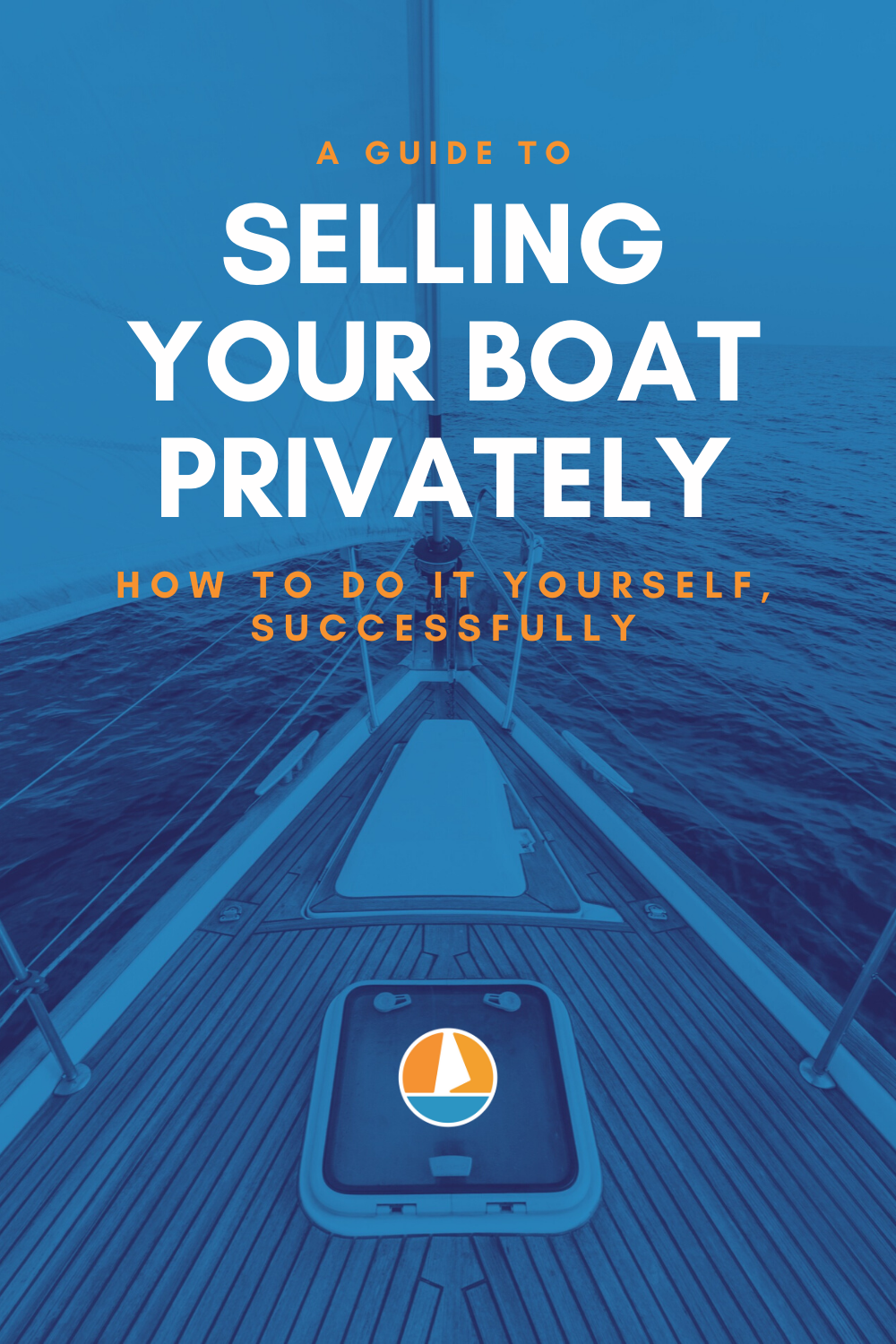


Leave a comment